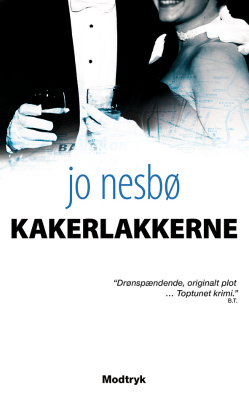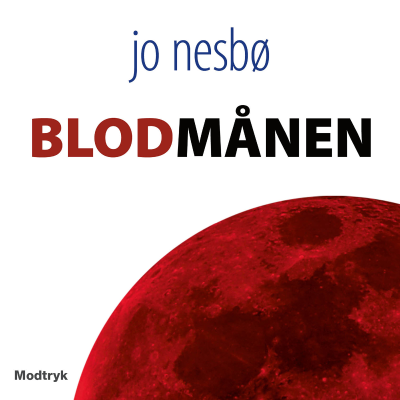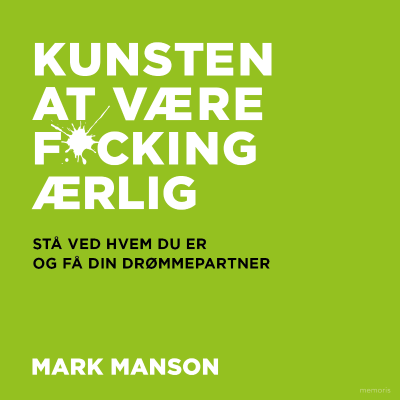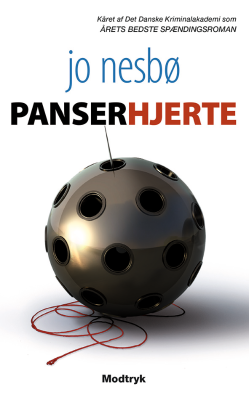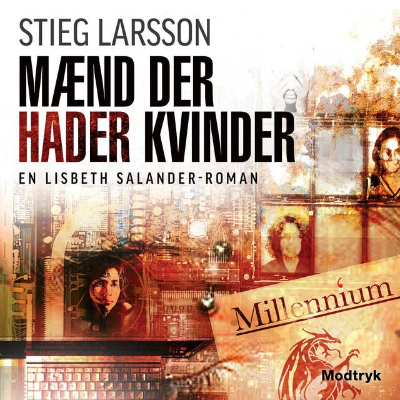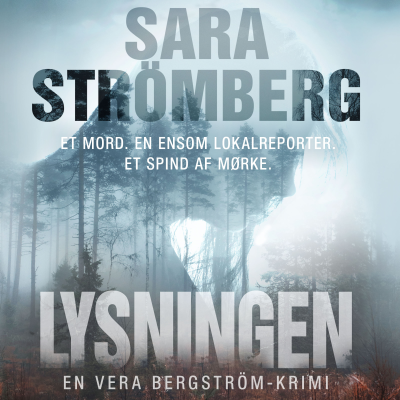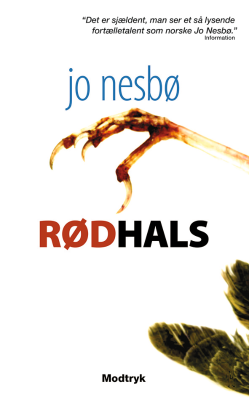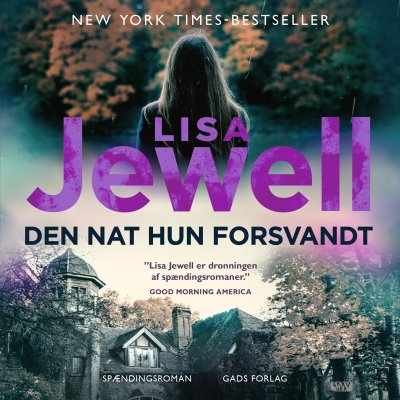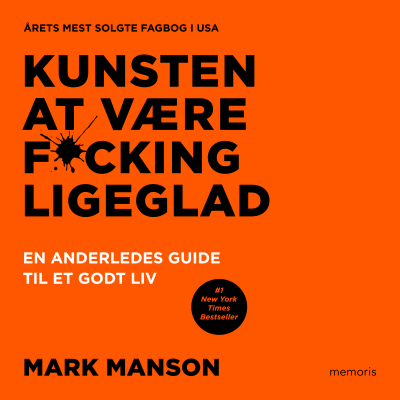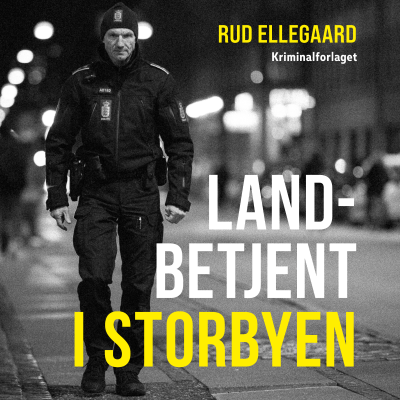
The Phoblographer
engelsk
Kultur & fritid
Begrænset tilbud
1 måned kun 9 kr.
Derefter 99 kr. / månedOpsig når som helst.
- 20 lydbogstimer pr. måned
- Podcasts kun på Podimo
- Gratis podcasts
Læs mere The Phoblographer
The Phoblographer champions authenticity in its product reviews and holistically throughout its conversations with photographers.
Alle episoder
1153 episoderThe Simple Trick to Getting a Pure White Background for Photography
Getting a pure white background doesn’t require post-production at all. Sure, you’ll shoot photos, but you don’t need to spend a whole day or two editing them just right. You can do it easily in-camera. But trust us when we say it’s a lot easier to do with flash than it is with LEDs. LEDs will mean that you’re more or less just spending more time editing in post-production. You can view this article and much more with minimal ads in our brand new app for iOS, iPadOS, and Android. What You Need A white background with a lot of lighting control. Ideally, you’ll use a box with a white interior A flash with a large diffuser like a softbox, a beauty dish, or something Another flash, possibly How to Do This Getting this done is pretty easy, but it will change depending on what you’re using. Set up: your white box on a hard, stable surface With the white box’s opening towards you, cut the top of it so that you can put a flash over it. Shut all the blinds and curtains in the room to kill ambient lighting Place the light modifier with the flash inside over the top Meter the scene. If you’re using TTL flash, set it to be one stop extra of power. TTL works by looking at the ISO and the aperture. The faster your shutter speed, the more ambient light you’ll kill. The slower it is, the more will come in. If you’re just using a white background, you’ll need a second flash. With your subject in front of the white background, meter them and photograph them with a flash accordingly. Have the second flash firing at the white background and make sure that it is a stop more powerful than the main light. “When you use your light meter to check the output of the lights, your main light should be weaker while your back light should be stronger. For the image above, our main light (which was next to the camera and in front of our model) was metered to f8 at ISO 100. The back light (hitting the background and positioned off to the side) was metered to f11 at ISO 100. Therefore, the light in the back is brighter and therefore gives the effect of a seamless white. It would have also worked if my main light was set to f5.6 and my back light was set to f8. Same with my main being set to f2.8 and my back being set to f4.” Getting a background to go pure white The Idea The idea here is that you’re trying to make the background bright white. This is more complicated to do with LEDs and also doesn’t give you the crisp quality a flash can. To get the background to appear purely white, it needs to be brighter than the subject you’re photographing. That’s how you make it stand out. And it makes sense. If you were photographing a portrait subject with bokeh balls in the background, the bokeh balls will stand out because they’re brighter than your subject. The same idea is being applied here. If you don’t have all these, you should take a look at our tutorial on how to do it with a window, a reflector, and one flash. Of course, you’ll have to do some post-production. And if you’re like me, you want to avoid post-production as much as possible and get it right in-camera.
Bargain Bird Photography. Tamron 70-300mm F4.5-6.3 Di III RXD Review
The Tamron 70-300mm f4.5-6.3 Di III RXD will help keep you sane if you photograph birds. Tamron’s lenses are usually some of my favorites. Admittedly though, I lean a lot more towards their primes and their constant aperture zooms. But the Tamron 70-300mm f4.5-6.3 Di III RXD is a little bit of this and a little bit of that. The image quality could be better. But the reliability is fantastic. You’ll essentially be relying a lot on Sony’s fantastic image sensors to create stellar images. But no matter what, know that you can do them in pretty much any condition you throw at this lens. The Tamron 70-300mm f4.5-6.3 Di III RXD will help keep you sane if you photograph birds. Editor’s Note: This review was updated in January 2023. Table of Contents Pros and Cons Pros Cons Gear Used Tech Specs Ergonomics Build Quality Ease of Use Autofocus On the Nikon Z9 Image Quality Bokeh Chromatic Aberration Color Rendition Sharpness Extra Image Samples Conclusions Likes Dislikes Pros and Cons Pros Impressively sharp for the price point Weather sealed Speedy autofocus performance Lightweight Very, very affordable at $549 Cons I wish it had a zoom lock I also wish it had a focus limiter Gear Used We used the Sony a7r III with this lens. At a later point, we tested it with the Nikon Z9 as well. Tech Specs Tech specs are taken from the summarizing on LensRentals. Weather sealing Sony FE Mount Works with Sony AI with Animal AF 5.8 inches in diameter 67mm filter thread 15 elements in 10 groups 3 inches in length 2.6 feet minimum focusing 1.2 lbs Ergonomics The Tamron 70-300mm f4.5-6.3 Di III RXD is a pretty standard zoom for the Sony camera system. It’s designed to be one of the simplest lenses to use. And in many ways, it really is. The only control that matters on this lens is the zoom ring. That’s it. Said ring is also where you’ll place your hand most of the time. The lens almost doubles in size when it’s fully zoomed in and has the lens hood on. But if you’re photographing birds, then you’ll be fine. You’ll more or less be far enough. If you put this lens on an APS-C camera, you’ll be in even better shape. The front of this lens also has a small 62mm filter. Indeed, this is a compact lens. With enough room, you can put it in a camera bag while attached to a camera. At the rear is the manual focus ring. But I really doubt anyone will ever use it. I didn’t. Build Quality The Tamron 70-300mm f4.5-6.3 Di III RXD is said to be weather sealed. Indeed, we took it out once or twice in the rain. However, it’s a tough lens to use in the rain since it tends to be darker. Weather sealing aside, this lens is incredibly lightweight. Tamron has been doing this for a long time, and they need to be commended for it. They’re a company that really understands mirrorless cameras. They were originally designed to be smaller and lightweight. This lens adheres to that concept. Ease of Use The Tamron 70-300mm f4.5-6.3 Di III RXD has no real controls on the lens. The only big one is the zoom ring. So you’re basically just zooming in and out. Some would wonder if it should have a focus limiter. And at times, I really thought that it should. However, I don’t think I lost that many shots with this lens. What’s more, this lens should have a zoom lock. That helps keep it a bit more compact when it’s stored away. But I’m nitpicking here a bit. When photographing birds, use the large tracking focus setting with continuous AF. You’re much better off setting the focusing point yourself unless you have a clear shot at a bird feeder or something. Update January 2023 In 2022, an odd tree of Nikon’s took grafted branches from Tamron — and started to bear some odd fruit. In some cases, the lenses took Nikon’s exterior and pricing. In other cases, Tamron took the exterior and Nikon’s Z mount. In this case, the Tamron 70-300mm is available for Nikon Z mount. In Janaury 2023, we tested it on the Nikon Z9 for birding photography. And overall, it did a good job. But there are some weird...
Still Have Peel Apart Film? It’s Important You Do This
For more stories like this, please subscribe to The Phoblographer. The sad truth is that peel-apart film has been gone for many years. In its final years, it didn’t get enough love. For decades, it was used as a way to preview what you were shooting on medium format cameras, but it evolved into other things after that. Recently, Supersense tried recreating it. But if you have some of the original Fujifilm stuff, then you’ve got something special. Lots of folks don’t know what to do with peel-apart film. So we’re going to walk you through it. Oh, and by the way, my favorite camera to shoot peel-apart film with is the Polaroid 180. Put it In the Fridge. Now. If you happen to get some, trust me on this – put it in the fridge. Peel-apart film is an actual film, and film has organic matter in it. Like all organic materials, refrigeration helps preserve them. Whatever you do, don’t put it in the freezer. This film has a chemical in it that gets sorted through the photo once you shoot and pull it. Then it develops. Putting peel-apart film in the freezer lets that film bubble possibly burst. Then the film is useless. So put it in the fridge. Let it Defrost When You Want to Shoot it When you’re ready to shoot your peel-apart film, let it sit outside for a while. Let it adjust to room temperature for maybe an hour or so. This will get it prepped to shoot. And that brings us to our next step. Don’t Shoot it In the Cold Years ago, you could easily shoot peel-apart film in the cold, put it in a cold plate, and then warm it up with your body heat. At this point, all peel-apart film is pretty expired. So you’re best off just shooting it in warm weather. Aim for at least 70 degrees Fahrenheit in the room or the outdoor space you’re shooting. Years ago, I took a date out to shoot in the winter with this film. I pulled it through the roller when it was too cold out, and the photos never developed. When you pull the image, make sure you’re in the warmest place possible. That will make the chemical saturation its richest. Overexpose it By at Least a Stop of Light Typically, you’re supposed to overexpose expired film. When you use peel-apart film, you have to overexpose it. Use a light meter and get the best reading possible, then add a stop or so extra of light. Sometimes you’ll need to add two stops. This is the only way that you can get an image that will look great. The Secret: You Can’t Overdevelop It Remember, this isn’t digital, and it’s not really the darkroom. You can’t overdevelop peel-apart film. You can sit, let it develop, and it will just stop after some time. Peel-apart film usually tells you how long you need to wait until it’s done developing. You can underdevelop the shots, though. But, don’t do that. It’s a waste. Keep the Other Side, It’s a Negative You Can Develop at Home with Bleach Lastly, when you’re done shooting, don’t throw away the other side of the instant film. That side contains a negative that’s easy to develop at home. Just use bleach or some toilet bowl cleaner with bleach. Then you’ll be able to get a beautiful negative that you can scan.
The Great Guide to Tamron Zoom Lenses for Sony FE
Tamron lenses are fantastic. I’m not sure there’s any independent reviewer that would disagree with that. Tamron zoom lenses for Sony FE cameras are notably incredible. Their lenses don’t exactly compete with what Sony offers, but they augment it. What’s more, they do so while providing a ton of value for what they are. We’ve reviewed every Tamron zoom lens for Sony FE cameras on the market. And in this roundup, we’ll tell you what you need to know if you’re considering purchasing. This piece is presented in partnership with TAMRON. We’ve independently and ethically reviewed all the products in this post already without sponsorship. And we worked with them to recommend a few key gems to you. The Phoblographer’s various product round-up features are done in-house. Our philosophy is simple: you wouldn’t get a Wagyu beef steak review from a lifelong vegetarian. And you wouldn’t get photography advice from someone who doesn’t touch the product. We only recommend gear that we’ve fully reviewed. If you’re wondering why your favorite product didn’t make the cut, there’s a chance it’s on another list. If we haven’t reviewed it, we won’t recommend it. This method keeps our lists packed with industry-leading knowledge. Some of our stories include affiliate links. If you buy something through one of these links, we may earn an affiliate commission. Table of Contents Tamron Nomenclature Tamron 17-28mm f2.8 Di III RXD Tamron 28-75mm f2.8 Di III VXD G2 Tamron 28-200mm f2.8-5.6 Di III RXD Tamron 35-150mm f2-2.8 Di III VXD Tamron 50-400mm f4.5-6.3 Di III VC VXD Tamron 70-180mm f2.8 Di III VXD Tamron 70-300mm f4.5-6.3 Di III RXD Tamron 150-500mm f5-6.7 Di III VC VXD Tamron Nomenclature Here are some common Tamron terms in their lens naming and what they mean. Di: Tamron Di (Digitally Integrated) lenses are performance-optimized for digital cameras. Lenses with the nomenclature Di are lenses for DSLRs featuring full-frame sensors; Di II for DSLRs with APS-C sensors; Di III for mirrorless cameras with full-frame sensors; and Di III-A for mirrorless cameras with APS-C sensors. VXD: (Voice-Coil eXtreme torque Drive) The VXD AF Drive provides the highest levels of autofocus speed and precision in Tamron’s long history. It is Tamron’s first-ever linear motor focus mechanism for stunningly fast and accurate auto-focusing. Two VXD units are arranged in a floating system and operated simultaneously via electronic control to achieve excellent optical performance at all shooting distances near and far. Focus tracking is vastly improved for sports and racing photography. G1 or G2: First or second generation of a particular Tamron lens. VC: (Vibration Compensation Image Stabilization System) Tamron’s VC uses a proprietary actuator and algorithms to deliver an extremely stable viewfinder image with excellent tracking. The 3-coil system electromagnetically drives the lens element that compensates for vibration, which glides smoothly on three balls with little friction. Several lenses offer different modes for panning and video shooting. VC can also be customized with the TAP-In Console or Tamron Lens Utility. VC should always be turned off when using the lens on a tripod. RXD: (Rapid eXtra-silent Drive) The RXD stepping drive uses an actuator to precisely control the rotational angle of the motor, allowing it to directly drive the focusing lens without passing through a reduction gear. A sensor that accurately detects the position of the lens enables high-speed and precise AF, which is ideal when shooting moving subjects or video. Tamron 17-28mm f2.8 Di III RXD The Strong Point: This is a small wide-angle lens that can be used for general shooting. Stick it on the camera and it might be the only lens you need. In our review, we state: “The Tamron 17-28mm f2.8 Di III RXD is a fantastic lens when it comes to image quality. This overall makes it a stellar performer.” Buy Now Tamron 28-75mm f2.8 Di III VXD G2 The Strong Point: This is an update to the previou...
Remarkable Zoom, Handheld: Tamron 150-500mm F5-6.7 Di III Review
The super-telephoto is one of the most difficult lenses to master both for the lens builder and the photographer attempting to wield such large glass. While no 500mm will be described as tiny, Tamron managed to shed some weight and length while still packing in a lot of zoom. The Tamron 150-500mm f5-6.7 Di III VC VXD weighs 3.8 pounds and is roughly eight inches long. With image stabilization built in, the new telephoto is manageable enough to shoot handheld. Editor’s Note: This review has been updated on October 10th, 2022. I took the 150-500mm lens on a hike, photographed two soccer games, and chased hot air balloons — all without a tripod. I instantly fell in love with the 500mm reach that’s not attached to a stick. I was eager to open up the extreme zoom images. So how do the photographs from a handheld 500mm that’s priced lower than many competitors hold up? Table of Contents Too Long, Didn’t Read Pros and Cons Pros Cons Gear Used Innovations Tech Specs Ergonomics Build Quality Autofocus On Fujifilm Ease of Use Image Quality Bokeh Sharpness Lens Character Color Rendering Fujifilm Tests Extra Image Samples Edited Unedited Conclusions Likes Dislikes Too Long, Didn’t Read The Tamron 150-500mm f5-6.7 Di III VC VXD does an impressive job putting a 500mm zoom into a reasonably-sized lens. And the lens also manages to control aberration and distortion well. The biggest downside? The narrower aperture and long zoom length mean higher ISOs, along with some corner softness. Pros and Cons Pros Smaller than competing lenses Handheld telephoto shooting Versatile zoom range, with close-up ability Great color and background separation Reasonable price Weather-sealing Fantastic for Fujifilm X mount Cons Autofocus has occasional misses with fast action Soft corners Gear Used I used the Tamron 150-500mm f5-6.7 Di III VC VXD with the Sony A7R IV. I stashed my gear in the updated Wandrd PRVKE II backpack. Innovations 500mm is a lot of reach. But, the Tamron 150-500mm f5-6.7 Di III VC VXD is smaller and lighter than several similar lenses, including the Sony FE 200-600mm f5.6-6.3 G OSS, the Nikon AF-S 200-500mm f5.6E ED VR, and the Sigma 150-600mm f5-6.3 DG OS HSM Contemporary. The Canon RF 100-500mm f4.5-7.1 IS USM is slightly smaller. The Tamron also packs in some optical design and coating meant to preserve image quality. But, the biggest innovation about this lens is, well, that’s it’s not quite as big. Tech Specs Tamron lists these tech specs for the 150-500mm lens: Focal Length: 150-500mm Maximum Aperture: F5-6.7 Angle of View: (diagonal) 16°25’-4°57′ (for full-frame mirrorless format) Optical Construction: 25 elements in 16 groups Minimum Object Distance: 0.6m (23.6 in) (WIDE) / 1.8m (70.9 in) (TELE) Maximum Magnification Ratio: 1:3.1 (WIDE) / 1:3.7 (TELE) Filter Size: φ82mm Maximum Diameter: φ93mm Length: 209.6mm / 8.3 in (front tip of the lens to the lens mount face) Weight: 1,725g (60.8 oz) (without tripod mount included) / tripod mount 155g (5.5 oz) Aperture Blades: 7 (circular diaphragm, the circular diaphragm stays almost perfectly circular up to two stops down from maximum aperture) Minimum Aperture: F22-32 Standard Accessory: Round-shaped hood, Lens caps, Tripod mount Compatible Mounts: Sony E-mount Ergonomics Monstrous is typically the best word to describe telephoto lenses that reach 500mm. But, while the Tamron 150-500mm f5-6.7 Di III VC VXD isn’t small, it’s smaller than competing lenses. The Tamron is roughly four inches shorter and almost a pound lighter than the Sony FE 200-600mm f5.6-6.3 G OSS, and the maximum aperture at the wide-angle is brighter on the Tamron. The 150-500mm lens weighs 60.8 ounces, or about 3.8 pounds, adding a few ounces for the tripod collar. It will take up a little more than an eight-inch slot in the camera bag. While lighter than the closest competing lens, the 150-500mm is still hefty glass. It makes the Sony a7R IV front-heavy. After a few hours of use, the grip on the Sony body left a mark...
Vælg dit abonnement
Begrænset tilbud
Premium
20 timers lydbøger
Podcasts kun på Podimo
Gratis podcasts
Opsig når som helst
1 måned kun 9 kr.
Derefter 99 kr. / måned
Premium Plus
100 timers lydbøger
Podcasts kun på Podimo
Gratis podcasts
Opsig når som helst
Prøv gratis i 7 dage
Derefter 129 kr. / month
1 måned kun 9 kr. Derefter 99 kr. / måned. Opsig når som helst.











